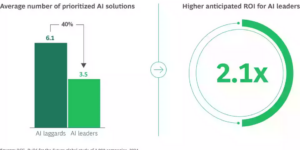The broker Aon plc has launched an auction capability for the Jan. 1, 2020 reinsurance renewals. The auction is designed to provide additional options for insurer clients by reducing the time frame around pricing negotiations while providing contract certainty to secure pricing for its insurer clients.
At the beginning of a reinsurance renewal, Aon will initiate the usual contract negotiations with reinsurers, including discussions around changes in exposures and modeling.
 The only difference when using the auction platform is around the timing of when the placements are completed, explained Bob Olson, Aon’s chief information officer, Reinsurance. “Cedents and reinsurers agree on the contractual wording before the auction is open, so that when the auction is completed, we’re good to go at that point in time [and ready] to bind lines,” he said.
The only difference when using the auction platform is around the timing of when the placements are completed, explained Bob Olson, Aon’s chief information officer, Reinsurance. “Cedents and reinsurers agree on the contractual wording before the auction is open, so that when the auction is completed, we’re good to go at that point in time [and ready] to bind lines,” he said.
The insurer, or cedent, provides the maximum auction price point, by layer, at which they are comfortable purchasing the capacity. During the same time period, the reinsurers provide pricing and capacity at a level they are comfortable selling, Olson added.
During the blind-bidding process reinsurers enter single or multiple price points and their corresponding capacity at each price point for the layer or layers they would like to assume, said Aon in its announcement about the auction, which was released at the recent Reinsurance Rendez-Vous de Septembre.
In a phone interview to explain the auction, Olson noted that the auction ideally will last for about a week.
Aon’s auction platform handles two types of placements: concurrent and non-concurrent. (These placements are also common in traditional reinsurance deals.)
Olson described concurrent placements, which are more common in the U.S. and Europe, as a percentage sharing of the placement on a pro-rated basis where all reinsurers get the same final price (although the amount of the risk they assume may differ). Aon uses an algorithm to identify the final consensus bids to complete the placement at or below the insurer’s maximum price.
On the other hand, with non-concurrent bidding, which tends to be more popular in Asia Pacific and with many government deals, reinsurers receive different prices based on the quotes entered, as long as they are below the cedents’ maximum price point, Olson said.
For example, if a reinsurer bids 10 percent of the contract at a specific rate, they’ll get 10 percent of the risk at that rate, while another reinsurer might bid 5 percent at a slightly higher rate and get 5 percent of the risk at that rate, said Olson. “It will keep going up until we fill up the placement.”
Olson said winning bids are binding and accepted automatically at the end of the auction process. Cedents will receive a summary of final terms with the line-up of reinsurers, and Aon will confirm the final signed lines, said Aon in its announcement.
Olson said if the auction process doesn’t fill the entire risk, then the cedent and Aon brokers can either revert to traditional methods to fill the remainder of the placement or run another supplemental auction.
When discussing the Aon auction process, one reinsurer, who didn’t want to be identified, expressed concern that the auction meant underwriters would have yet another platform to have to work with.
However, Aon emphasized that its trading partners will be able to participate in the auction via its existing platform, ABConnect Placements, the e-trading platform for Aon’s Reinsurance Solutions business.
“This brings the benefits of a single platform for data and placement across a reinsurer’s entire portfolio with Aon—whether via an auction or traditional placement,” said the broker in its announcement.
Aon is now open for auctions for the Jan. 1 renewal cycle for any client wishing to pursue the process, noted Olson.





















 Poor Background Music Choices Can Negatively Impact Work Performance
Poor Background Music Choices Can Negatively Impact Work Performance  Rising Civil Unrest, Political Violence Remain Top 10 Risk for Global Businesses: Allianz
Rising Civil Unrest, Political Violence Remain Top 10 Risk for Global Businesses: Allianz  Is State Farm General Too Big to Fail? Calif. Rate Hearing Concludes
Is State Farm General Too Big to Fail? Calif. Rate Hearing Concludes  2024 Second on Record for Most Tornadoes in the U.S. in a Year
2024 Second on Record for Most Tornadoes in the U.S. in a Year 






